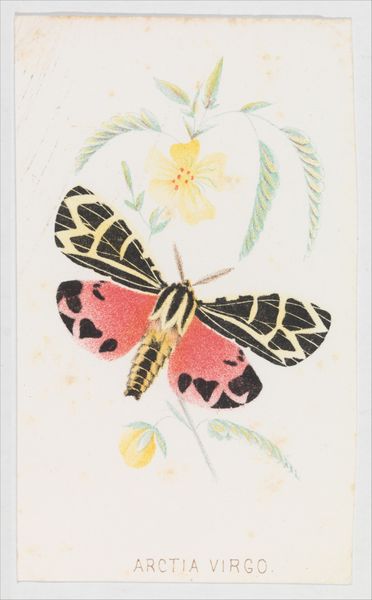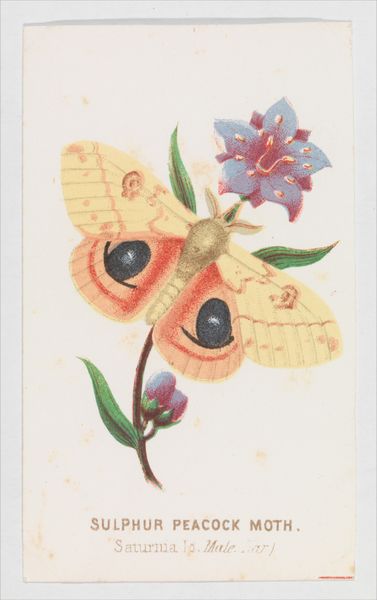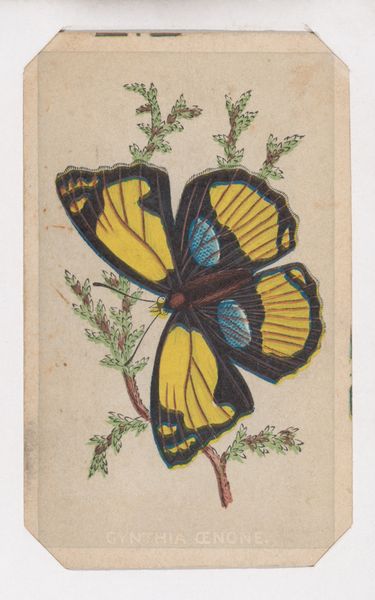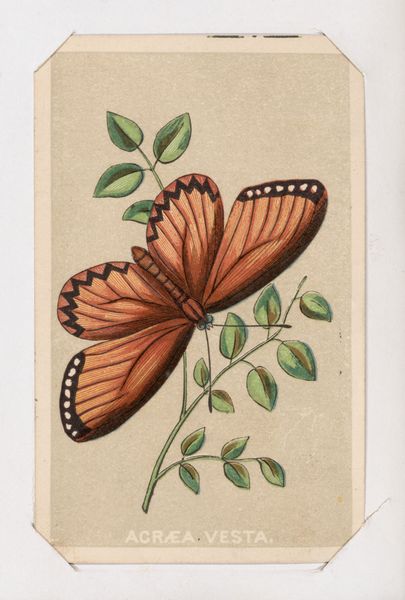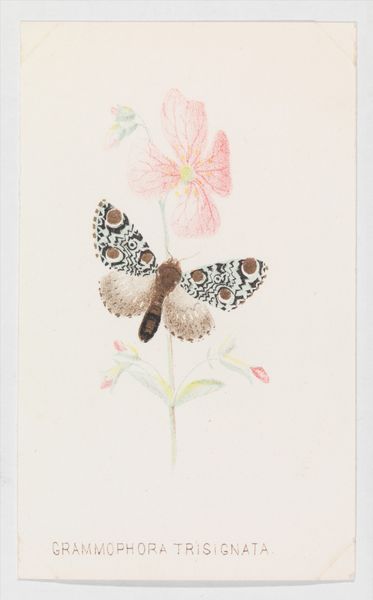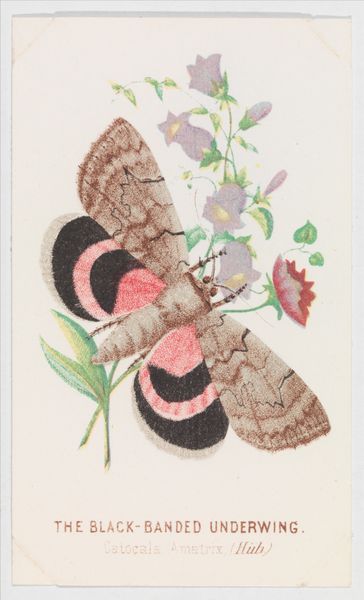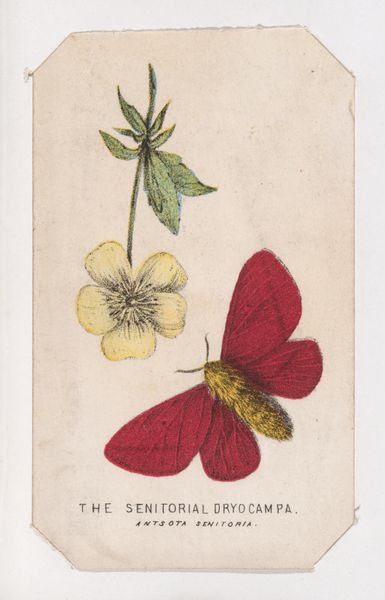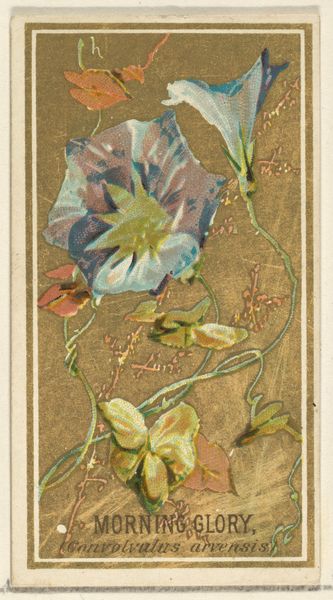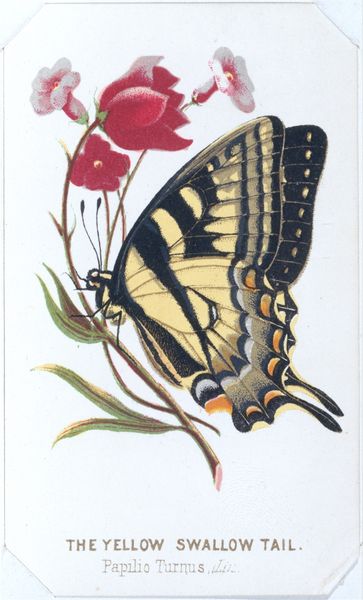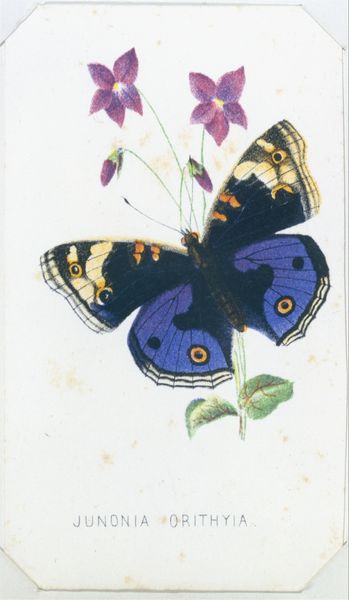
The Painted Lady butterfly card from the Butterflies and Moths of America series 1862 - 1869
0:00
0:00
drawing, print
#
drawing
#
toned paper
#
water colours
#
egg art
# print
#
handmade artwork painting
#
coloured pencil
#
naive art
#
watercolour bleed
#
earthenware
#
watercolour illustration
#
watercolor
Dimensions: Sheet: 4 in. × 2 1/2 in. (10.2 × 6.4 cm)
Copyright: Public Domain
Curator: Ah, look at this; it’s a trading card from Louis Prang & Co.'s "Butterflies and Moths of America" series, dating from the 1860s. The Painted Lady is quite the colorful subject. Editor: Yes! At first glance, I notice how gently realistic yet idealized the image appears, there is something delicate and quite dreamlike, too, as the colors of the toned paper softly complement the watercolor illustration. Curator: Exactly, the colors sing, don’t they? Louis Prang was a pioneer of chromolithography in America, elevating what were, effectively, trade cards, to something approaching an art form. Butterflies have forever served as symbols, as metaphors of the soul... and, yes, the beauty of ephemeral existence. Editor: Indeed. And it's not just any butterfly. The Painted Lady, or Cynthia cardui, suggests transience, as she migrates over vast distances and blooms as brightly as the flowers from which it gathers nectar, then disappears when seasons end. Do you see a connection to its lifecycle and the Victorian fascination with mourning practices of keepsake cards, designed to memorialize loved ones passed? Curator: A melancholic memento mori, perhaps, but also a celebration! I see echoes of this form in early baseball cards, too. These simple cards democratized art, making accessible the world of nature in an accessible way—a little bit of beauty slipped into your everyday life. Prang really believed in that accessibility, even establishing a publishing house with the aim of introducing art education to American schools. Editor: Yes, it is more than a naturalistic depiction of insect and flower! The image encapsulates change and the cyclical rhythm of existence. The choice of the butterfly seems purposeful, even a bit like those Victorian-era symbolic flowers that carry complex meaning. There’s a hidden language in plain sight here. Curator: It truly speaks volumes. I often wonder what folks of the era thought holding something like this for the first time! It bridges the gap between the world outside the window and art held in the palm. Editor: Beautifully put; now, looking at the card a second time, that painted lady flitting over flowers makes me think of both beauty and an appreciation for small things.
Comments
No comments
Be the first to comment and join the conversation on the ultimate creative platform.

